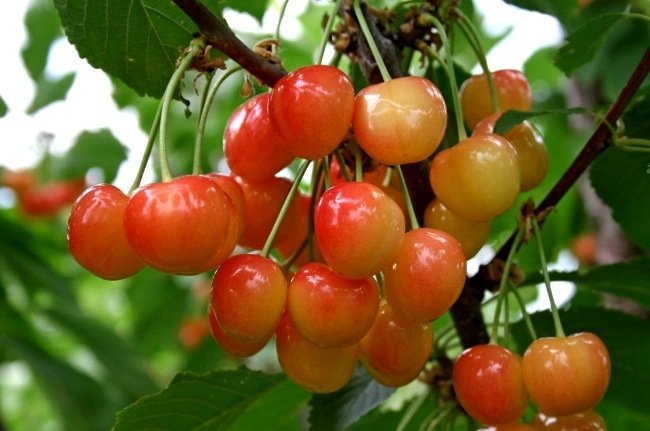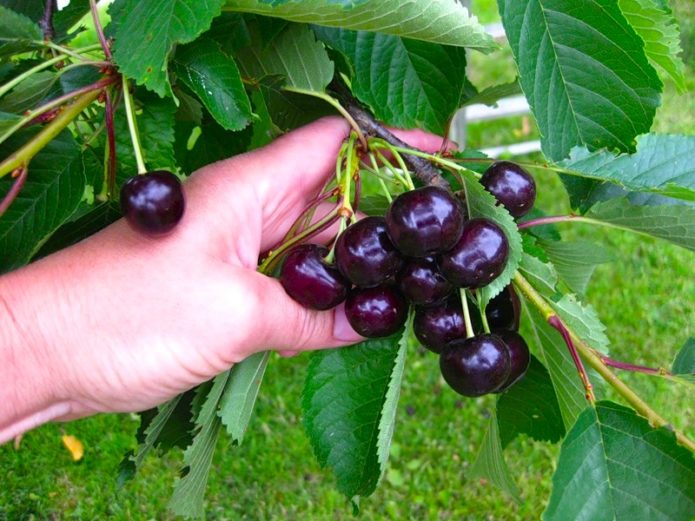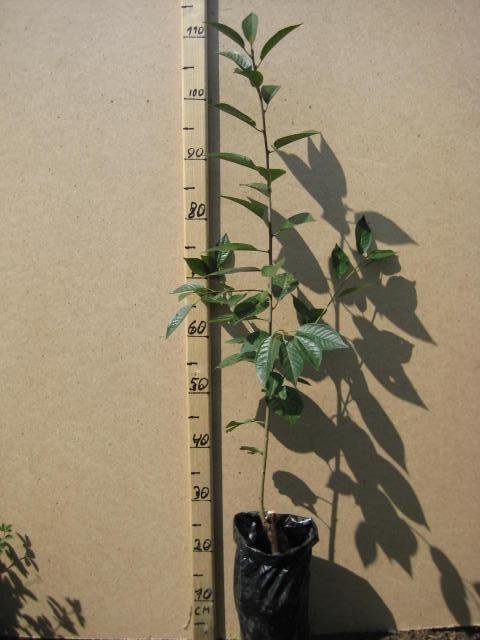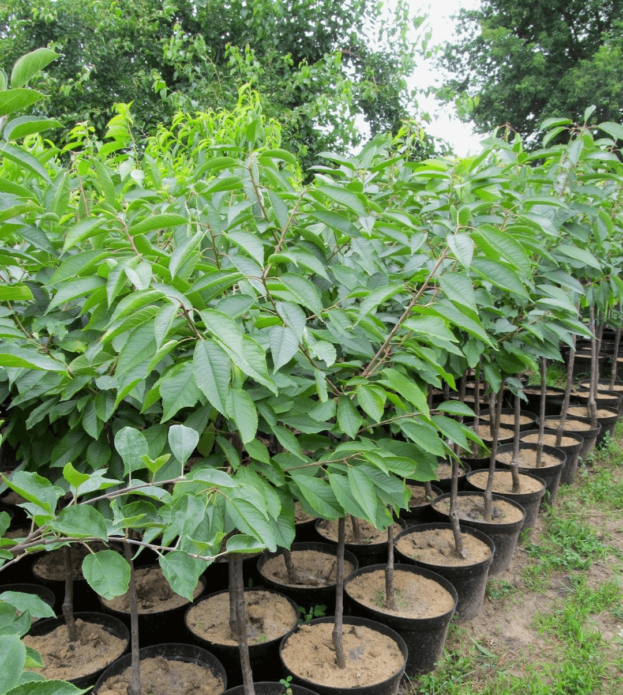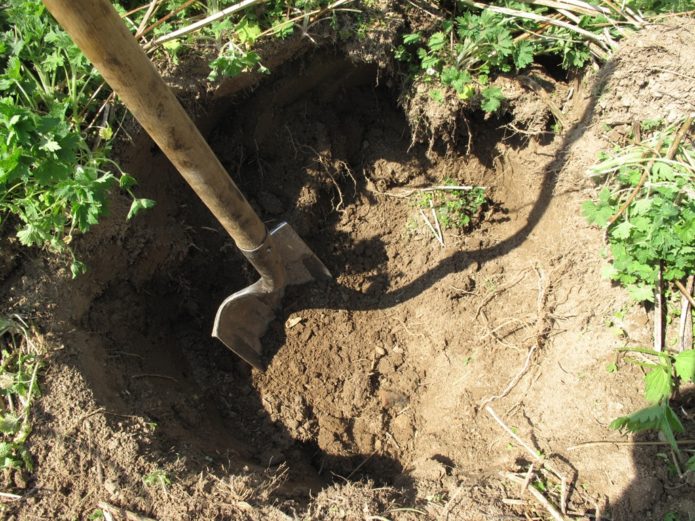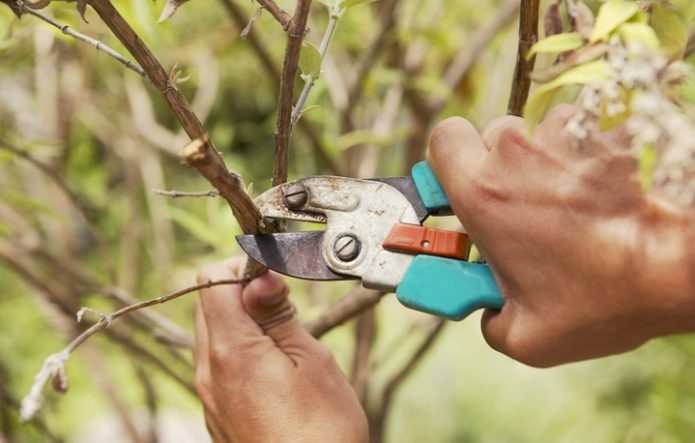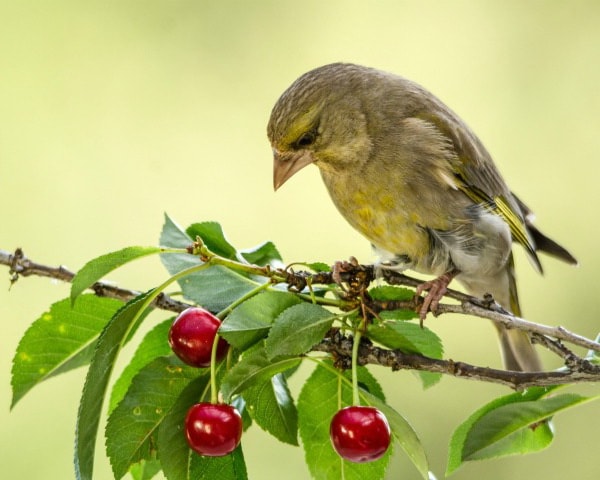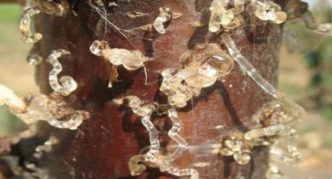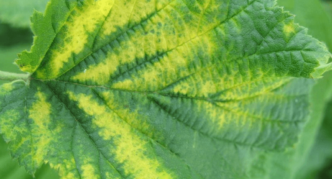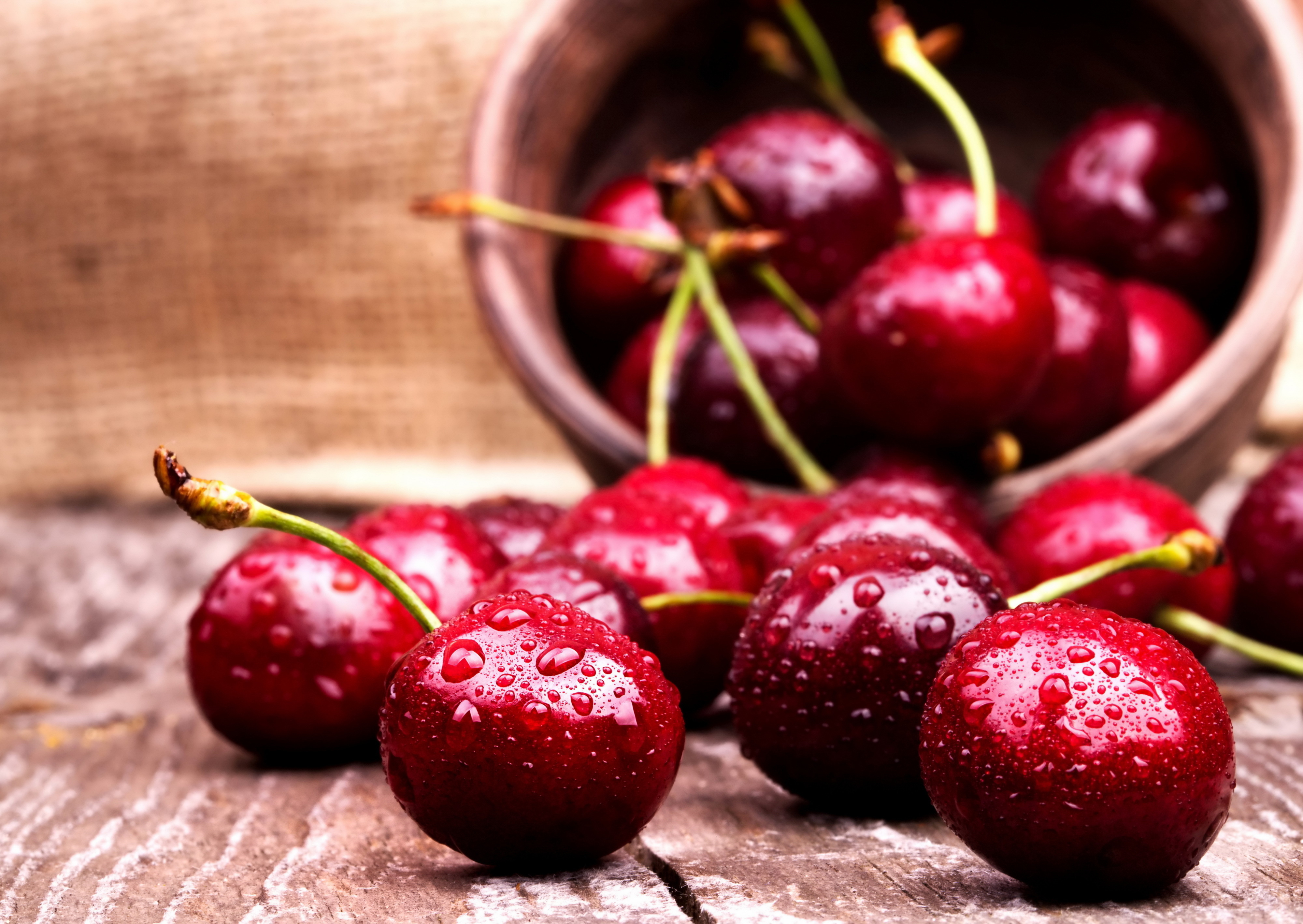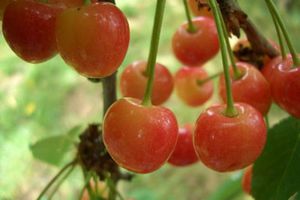For many years, the cultivation of sweet cherries remained the privilege of residents of the southern regions - in other regions, the heat-loving tree simply died in severe frosts. However, thanks to the efforts of breeders, varieties that are resistant to cold have appeared, available for growing in the harshest climates. A striking example is the Revna cherry.
Content
History of origin and description of the Revna variety
Revna was bred in the city of Bryansk, at the All-Russian Research Institute of Lupine, by the efforts of A.I. Astakhova and M.V. Kanshina, who were later assigned the authorship. The variety was grown from a sweet cherry seedling Bryanskaya rozovaya and inherited the best qualities from the mother plant - resistance to fungi, yield, increased frost resistance and high-quality fruits that do not show a tendency to cracking.
In 1993, Revna was sent for state variety testing, and a year later she was added to the State Register of Plants of the Russian Federation, zoned for the Central Region (although in fact this cherry is cultivated not only throughout Russia, but also beyond its borders).
Cherry Revna is a tree of medium height with a tendency to intensive branch growth. The crown is pyramidal, strong, medium thickened. The branches are straight, of moderate thickness, strongly deviate from the trunk. Young shoots are colored brown. Buds are large in size, vegetative in shape, resemble an egg, flowers are more rounded.
The leaves are large, leathery, dark green, with strongly jagged edges, a rounded base and a pointed tip. The petioles are short, of medium thickness, with two or three large glands. Flowers are white, small, bowl-shaped, collected in inflorescences of four. Fruit formation in 81% of cases occurs on bouquet branches, and only an insignificant part of ovaries is located on the bases of annual shoots.
Ravna berries are flat-round, medium in size, with a small white dot at the base of the top. The average fruit weighs 4.7 g, but occasionally there are real giants reaching 7.7 g. The skin is dense and shiny, its color is dark red, almost black. The stone is oval, light brown, of medium size, it can be separated from the pulp without difficulty. The pulp is firm, dark red in color and has a wonderful sweet taste - 4.9 points out of 5 according to the tasting rating.
Medium late variety - flowering occurs in mid-May, and harvesting - in the last decade of June - early July. Sweet cherry is positioned as partially self-fertile, however, in fact, the fruit set during self-pollination is not more than 5%, therefore, for normal fruiting, Revna needs to be in close proximity to third-party pollinators. The early fruiting rate is extremely low - the tree begins to bear fruit at the 5th year of life, and it enters full fruiting force only by the age of 10. The yield is high - on average, from an adult plant, you can get 14 kg of fruits (about 73 c / ha). The maximum possible yield is 20–30 kg per tree (112 kg / ha). The fruits are universal - they can be eaten fresh, frozen, used to prepare various dishes and winter preparations. When ripe, the berries do not crack, they can easily withstand transportation over long distances, at zero temperature they can be stored for up to 2 weeks.
The frost resistance of Revna is above average - in the most severe winters in the Central Region, the trees froze under a maximum of 0.4 points. The trunk and base of the branches rarely suffer from sunburn. A high resistance of the variety to fungal attack, primarily coccomycosis, was noted..
Pollinators of Revna
It is widely believed that cherries serve as a good pollinator for cherries, but in reality this is not the case - for successful inter-pollination, it is necessary to plant plants of the same species nearby. Ideally, 4-5 different varieties should be planted on the site - this will significantly increase the chances of getting a good harvest. Since Revna is not able to bear fruit normally without third-party pollinators, the presence of other cherries next to her is simply necessary.
The best pollinators will be:
- Iput,
- Compact Venyaminova,
- Ovstuzhenka,
- Raditsa,
- Tyutchevka.
Planting cherries in the garden
Sweet cherry prefers to grow on light fertile soil (best of all on loam and sandy loam) with a neutral reaction. But in the Central region, in which the Revna variety is zoned, acidic, sod-podzolic soils prevail. Therefore, if the soil on your site is acidic, before planting a tree, you will need to bring its reaction closer to neutral by liming. The amount of lime depends on the type of soil - on loams, 600-800 g of lime should be applied per 1 m2 soil, and on light sandy loam, 300–400 g will be quite enough. Lime is evenly scattered over the site and dug to a depth of 20–30 cm.
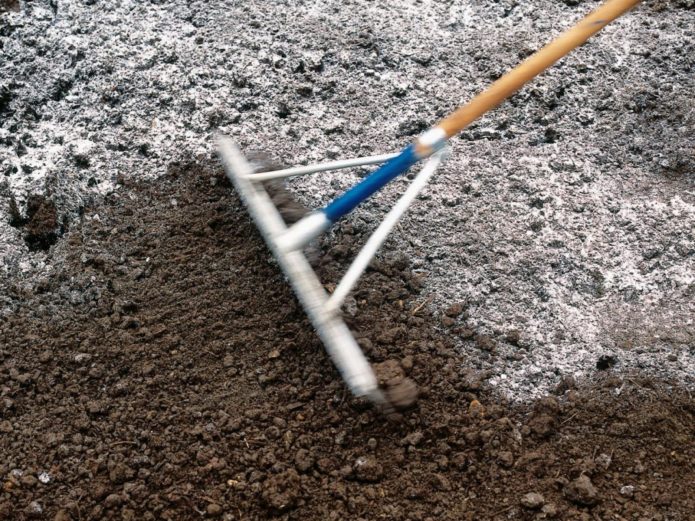
Lime must be evenly distributed over the site, and then embedded in the soil by loosening or deep digging
Primary liming is carried out about six months before tree planting (if an autumn planting is planned, the soil should be liming in spring, and vice versa). In the future, the procedure must be repeated every 3-4 years, but in a slightly different way: the lime is distributed over the tree-trunk circle and the soil is dug to a depth of 15-20 cm (or it is loosened deeply).
Liming improves water and air exchange in the plant root system and helps the roots to better absorb nutrients from the soil and fertilizers. In addition, cherries need lime to form seeds at the stage of fruit ripening.
The tree does not tolerate sandstones and heavy clay soils - the soil on the site must be loose, air and water permeable. Choose a well-lit area for planting, located on a small hill and reliably protected from gusts of cold winds.
For planting, you should choose one- or two-year-old seedlings 80-100 cm high - older plants are unlikely to be able to take root in a new place. A young tree should be strong, with a powerful root system, without signs of diseases and mechanical damage on the trunk.
Be sure to check the graft site, since it is the scion that is responsible for the development of the varietal tree.: in the lower part of the bole of the grafted seedling there is always a scar that remains after the rootstock grows together with the scion. In addition, in this place the stem is slightly curved, there is a difference in the color of the bark.
The grafting site should be a gentle curve. If sticking stumps are visible on it, the plant was not grafted correctly.
After purchase, the roots of the seedlings are wrapped in a damp cloth so that they do not dry out during transportation. If this does happen, upon arrival home, the root system is immersed in water and left there for 6-8 hours. It is very useful to dissolve a small amount of Kornevin in water - this simple manipulation will help plants more easily take root in a new place, and at the same time will protect them from fungal diseases in the first stages of rooting. Instructions for use of the drug are indicated on the package.
Sometimes cherry seedlings are sold in containers (like potted plants). In this case, you will not be able to see the root system, so pay special attention to the leaves and shoots - they should be evenly and intensely colored. If the roots of the plant crawl out of the container, it means that the cherry has been in cramped conditions for a very long time and after planting in the ground it will hurt for a long time.
If a young tree is planted in the spring, it will probably have time to acquire a powerful root system before severe frosts and will not die due to harsh weather. However, it is necessary to carry out planting manipulations before the buds begin to swell on the plants - otherwise the cherry will hurt for a long time and it is difficult to take root. The outside temperature should be above 0 ° C.
Landing is performed as follows:
- In the fall, they prepare the site by digging it up with the introduction of fertilizers - manure, rotted compost and complex mineral dressings. If necessary, lime the soil. Please note that lime cannot be applied to the soil at the same time as fertilizers that contain nitrogen (in particular, manure).
- 2 weeks before planting, a hole is dug 1 m deep and 70–80 cm wide. If you plan to plant several trees, the distance between them should be 4–5 m.
- A peg is hammered into the center of the pit - the future support for the plant.
- Thoroughly mix 2 buckets of soil, 35 kg of good humus or compost, 3 kg of superphosphate, 2 kg of ammonium sulfate, 1 kg of potash fertilizer and 1 liter of ash. With this mixture, the planting hole must be filled by a third.
If the soil on the site is clayey, before adding the nutrient mixture, 2 buckets of sand are poured into the pit, and if it is sandy, the same amount of clay is added.
- Before planting, the soil is well compacted, a mound is made in the center of the pit and sprinkled on top with a layer of clean soil so that the roots of the seedling do not get burned from contact with fertilizers. The composition of the nutrient mixture should not contain lime and nitrogen (i.e., urea) - they are destructive for the delicate root system of cherries.
- The tree is placed on a mound so that its trunk is located on the north side of the support, but not close, but at a distance of 10 cm. Carefully straighten the roots, making sure that the root collar of the seedling remains 3-5 cm above the soil level.
- The pit is filled with earth halfway, after which a bucket of water is poured into it. When the liquid is absorbed, the pit is filled up to the top, compacting the soil well.
- They tie a tree to a support, make a hole around it, ending it with an earthen roller (so that moisture does not spread during watering), and water the seedling with 1-2 buckets of water.
- The soil near the cherries is mulched with peat, humus.
Video: planting cherries
Subtleties of care and cultivation
As you know, competent plant care is the key to a bountiful harvest, therefore, when growing cherries of the Revna variety, you should not neglect certain agrotechnical rules:
- Watering is especially necessary for the plant at the beginning of the growing season, as well as at the stages of flowering and fruit setting. An amount of water should be applied under each tree so that the soil is moistened to a depth of 30–40 cm. Under normal conditions, watering is carried out once a month, but during dry periods, cherries should be watered weekly. If the weather is excessively rainy, sometimes you even have to dig drainage holes near the trees to collect excess rainwater. Please note that before watering, it is necessary to loosen the sweet cherry tree trunk circle. For mature trees, an annular groove 20–30 cm deep is dug along the crown periphery, and water is poured into it.
- To avoid cracking of the bark, burns and the appearance of various diseases, the trunk of a sweet cherry must be whitened in early spring. You can use a ready-made mixture for whitewashing (it is sold in any garden store) or you can make it yourself from 3 kg of slaked lime, 200 g of glue base, 0.5 kg of copper sulfate and 10 liters of water.
- Pruning and shaping the crown of the tree is carried out in early spring before the buds begin to bloom. This should be done annually, since the Revna variety is prone to rapid growth of shoots. The first shaping pruning is carried out on an annual plant and depends on the goal pursued by the gardener. If you want to achieve intensive growth of shoots at an acute angle, the side branches should be shortened by 1 / 4-1 / 5 part. If your goal is to reach an angle of departure within 50-60 °, you need to remove 1/2 of the branch. In order for the shoots to grow intensively and deviate from the trunk at an angle of 90 °, most of them are cut off. The branches that grow faster than others are pruned harder and more regularly. All dry and diseased shoots are subject to mandatory removal - they are cut off completely, and then burned.
- If the spring is rainy and cold, during flowering cherries are sprayed with a honey solution (100 g of honey per 10 liters of water) to attract pollinating insects to it.
- As necessary, you need to weed the trunk circle so that the weeds do not pull useful trace elements from the soil.
In the 2nd year after planting, the trunk circle should be at least 1 m in diameter, and over the next 3 years it should increase by another 50 cm.
- The trees are fed three times per season. They begin to do this from the third year of life - until then, the plant will have enough fertilizers that were introduced into the soil during planting. The first top dressing is carried out at the very beginning of the growing season, when the buds bloom on the cherry: 8 g of urea or 800 g of manure are dissolved in 10 liters of water and watered on the plant's trunk circle. When buds appear and during fruit setting, cherries are fertilized with a different composition: 30 g of superphosphate is mixed with a glass of ash and dissolved in 10 liters of water. In autumn, potash fertilizers are applied (up to 40 g per 1 m2) and superphosphates (up to 80 g per 1 m2). Fertilizing with humus is carried out no more than once every 2 years.
- Revna will not prevent preventive treatments for diseases. In the spring, before bud break, the tree itself and the soil around it are sprayed with copper sulfate (0.1%) or Nitrafen. As soon as the cherry blossoms, it is sprayed with Bordeaux liquid (0.1%) and the same treatment is repeated after 2-3 weeks. If you notice signs of illness or pest infestation, immediately treat the cherries with the appropriate insecticidal or fungicidal preparations, following the instructions.
- The crop can be significantly damaged by birds that eat ripe fruits from the branches of the cherry. To scare them away, rustling objects (for example, pieces of plastic wrap or cellophane bags), homemade turntables from plastic bottles or strips of white cloth are fixed on the branches. A very effective remedy is a protective net - it is thrown over the tree so that the birds cannot get to the fruits. You can also purchase an electronic repeller or a special gel.
- In the fall, deep loosening or digging of the soil is carried out, as well as water-charging irrigation, in which about 150 liters of water are introduced under each plant. In rainy years, the need for such watering is no longer necessary. In addition, before the onset of frost, you need to carry out a second whitewashing of the trunk - slaked lime is mixed with clay in a 1: 1 ratio, a little wood glue is added and diluted with water until the consistency of thick sour cream.Such treatment will provide reliable protection not only from diseases, but also from severe winter weather.
- To prevent rodents from damaging the cherry trunk in winter, you need to wrap it in snow and tie it with spruce branches. If the tree is young, be sure to make sure that it is well attached to the support, otherwise the plant may suffer from strong winds or break under the weight of the snow.
Table: diseases of cherries and the fight against them
| Name | Description | Causes | Scale | Method of struggle |
| Chlorotic ring spot | It appears in the shaded areas of the crown with yellow, light green rings or stripes. Leads to summer yellowing and leaf fall. | Transmitted with pollen or seeds. | Loss of yield is 40-50%. |
|
| Necrotic ring spot | Brown spots with loss of affected tissue. | Transmitted by seeds, pollen or grafting. | Reduced yield up to 50%. |
|
| Linear pattern | Yellow edging of the veins of the leaf plate, the pattern resembles an oak leaf. Very rare. | Pruning, grafting of plants with non-sterile instruments. | The death of the tree. |
|
| Gum therapy (hommosis) | Non-communicable disease, the so-called tears of the tree. It appears on the bark as a viscous substance of amber or brown color. | Adverse environmental influences. | With chronic gommosis, the tree will die. | Young branches are removed to a healthy area, the wounds are cleaned with a knife, treated with copper sulfate, a 3% solution of potassium permanganate. After that, the tree is completely sprayed with a 1% solution of Bordeaux liquid (carried out in the spring at temperatures above 5aboutWith or in autumn after partial leaf fall). |
Photo gallery: signs of cherry diseases
- Hommosis manifests itself on the bark by secretions of a viscous brown substance
- Necrotic ring spot is transmitted by seed, pollen, or grafting
- Chlorotic ring spotting leads to summer leaf fall
Video: how to increase the yield of cherries
Variety reviews
Bryansk pink and Iput bloom almost at the same time, the difference in flowering we had 3-4 days was last year, Iput blooms a little later. But the period overlaps, plus the pollen on the bees remains active for a week or even more. Another great cherry for them in company - Revna, I like how it forms itself, a kind of bush with an ideal deviation of the branches, maybe this is so lucky for us, we have two of them, and both grow equally, just beauties.
My sister grows cherries, the variety is called Revna. A very frost-resistant tree, since it was minus 30 in winter and survived nothing. Sweet cherry went into the fifth year at the end of July. Cherry color is deep red, even more black when ripe. Delicious cherries.
Today they removed their Revna, the second year bears fruit. The neighbors planted not far away, in the spring, a large cherry sapling and they had several flowers that were enough to pollinate mine. The following subjective points can be added to the averaged description of VNIISPK:
- the average weight in my conditions turned out to be noticeably higher than in the description, and outwardly the berry was no less than the one that was bought in Bulgaria (from not expensive ones). And this with agricultural technology "without fanaticism", only watered a couple of times, because we have no rain at all.
- pleased with the taste, it is not just sweet, but in some berries (apparently from those that were quite in the sun) wine-sweet with a very deep cherry aftertaste. It reminded me of Hungarian compotes from my childhood. This is what a berry shot on time means.
- birds and we have tasted this culture. I used a child's toy as a guard (someone from the members of the forum guarded the grapes like that). After I put it on the branches in a prominent place, there were no new bites of the berry.
Although the Revna cherry variety can hardly be called whimsical, it still needs good care. However, both physical and material costs will more than pay off with a rich harvest of delicious berries that can be eaten fresh or processed.
